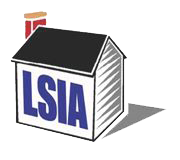Enhancing Linthicum, One Stone at a Time
By Kevin Plessner
Many of LSIA’s efforts to preserve and enhance our community are intangible, such as acting as a watchdog against harmful rezoning and working with our elected representatives to enact and block legislation in ways that benefit Linthicum. However, the Transportation Community Enhancement Grant program provides a stark exception to this reality. It is through the Community Enhancement Grant program that LSIA has, for nearly 16 years, replaced and built sidewalks, noise barriers, speed bumps, signs and other transportation-related structures throughout Linthicum. In fact, LSIA has used more than one million dollars in funding to improve the transportation and transportation-related structures our community – and counting!
The Transportation Community Enhancement Grants Program was enacted into law following the 2001 legislative session. Since that time, LSIA’s efforts have culminated in Linthicum receiving a Lion’s share of the grant funds—Linthicum (through LSIA) has been by far the largest recipient of transportation grant funds from the program. LSIA has completed transportation improvement projects totaling almost $200,000 in grant funds in the current fiscal year alone (2017). Since 2001, LSIA has successfully completed thirty-three (33) transportation projects and has received $1,143,784.55 in funding to complete these transportation-related projects in Linthicum[1].
The bill that would eventually create that Transportation Community Enhancement Grants Program was first introduced in the Maryland Senate by Senator Ed DeGrange. Senators Astle, Bromwell, Jimeno, Kasemeyer, Miller and Neall were co-sponsors of the bill. Delegate Sophocleus, Delegate Love and Delegate Rzepkowski subsequently sponsored the bill in the House of Delegates.
Senator DeGrange created the idea for the Transportation Community Enhancement Grant Program to counteract the adverse effects of BWI to our community. DeGrange explained that he wanted to alleviate “the airport impact as it was growing, from both airplanes and the traffic impact associated with the growth around the airport. I wanted to benefit the communities on a daily basis.” He further explained that at the time he created the legislation, it was the only law of its kind in the country and that since that time, other communities have since contacted him for guidance. He has always been very proud that he was able to get the bill signed into law in the first year that it was introduced.
Compensation pursuant to the law is limited to the communities that are located in the “noise zone” surrounding BWI Airport. This is because these communities shoulder the most impact of the daily operations of BWI Airport (noise, traffic, strained traffic infrastructure, etc). The communities that may qualify for the grant funds must be within the certified “Airport Noise Zone” or within two miles or the outermost noise contour. The map of the most current Airport Noise Zone and noise contour is below, and is updated regularly:
This law is now codified the Maryland Transportation Code as section 5-414 and requires that “at least one dollar for every takeoff and landing of an aircraft that occurs at Baltimore-Washington InternationalThurgood Marshall Airport for the most recent available calendar year” will constitute the grant budget. Only community associations that are wholly or partially located in the certified Noise Zone or the border extending 2 miles outside of the certified noise zone may qualify funding from the grant program.
In order for LSIA to receive the grant funds, it first needs to submit a grant application to the Citizens’ Committee for the Enhancement of Communities Surrounding Baltimore/Washington International Airport (BWI) for consideration. The Committee meets quarterly and considers livability issues within the area that the application is proposing to use the grant money.[2] LSIA is responsible for obtaining multiple bids for each project, all necessary permits, project management and everything else that is necessary from the beginning to the end of the project, including expenditure reporting and accounting that must be submitted to the state.
LSIA most commonly uses grant funds to replace the sidewalks in the community that are the most in disrepair. However, LSIA has also successfully used the program for installation of fences, signs, speedbumps, noise barriers and trees. For example, the fence along the ballfield on Andover Road was built by LSIA, as were the speed bumps on Benton Avenue and the Linthicum welcome side at Maple Rd. and Baltimore Annapolis Boulevard.
Displayed below are some of the areas in Linthicum that have been improved by LSIA through the use of the Community Enhancement Grant program. However, please not that very incomplete historical data was used to create this map and it shows only a small fraction of the improvements that LSIA has completed.
“LSIA has done a great job in getting funding from the program and benefiting the community from a whole host of things that would not have gotten completed otherwise” opined DeGrange. “LSIA was the first and the leader in this, and to their credit, they were helping other communities with the grant process.” Indeed, LSIA continues to be at the forefront in collecting grant fund to improve Linthicum. We continue have a long list of grant requests that have come from various different members of the Linthicum Community. Although we realize that we cannot fix every sign, sidewalk, street, noise pollution and imperfect traffic pattern in Linthicum, we are certainly going to try!
[1] These figure was created using historical records obtained from both the MAA and LSIA.
[2] LSIA’s very own Senior Advisor Ken Glendenning sits on the Citizens Committee for the Enhancement of Communities Surrounding Baltimore/Washington International Thurgood Marshall Airport (BWI) but he recuses himself from voting on all LSIA-sponsored grants.



